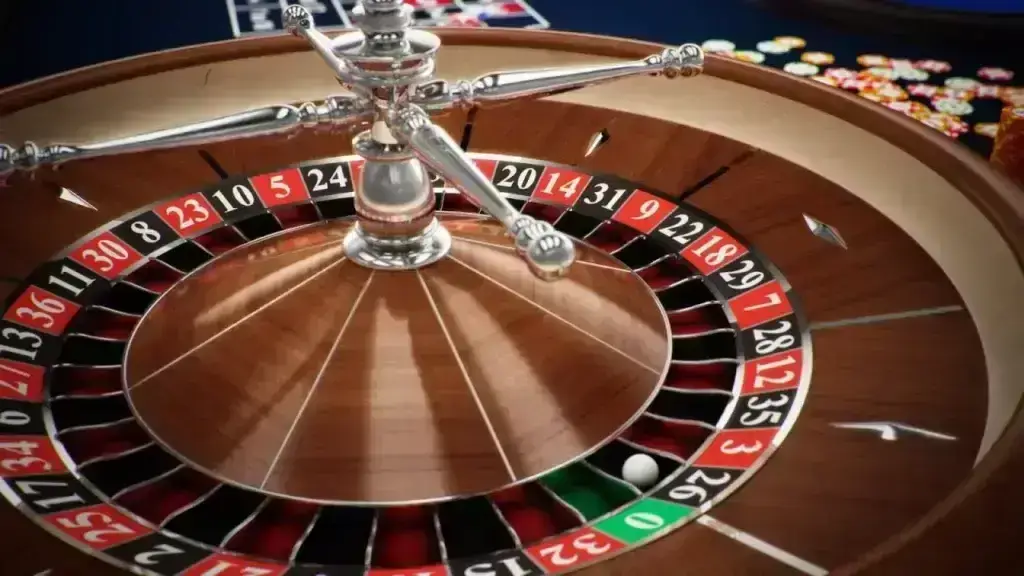The Martingale strategy in roulette was born from a mathematical fascination with odds and probabilities back in the 18th century. French mathematician Paul Pierre Laplace, famous for his contribution to probability theory, once encountered gambling. But the creator of the tactic itself was John Henry Martingale, a casino owner who was looking for a way to attract more people, make bets predictable and, it would seem, guaranteed.
The essence of the Martingale strategy in roulette
The essence of the system is simple: after each loss, the bet is doubled so that, ultimately, the win covers all previous losses and brings profit. At first glance, it seems that mathematical predictability ensures success: “at any moment, luck must turn its face.” But is this really so?
The main problems with the Martingale strategy in roulette:
- Betting limits: most casinos have limits on maximum bets, which does not allow players to endlessly double the amount. These limits vary from establishment to establishment and can be, for example, from 10,000 to 50,000 rubles, depending on the type of table and the rules of the establishment. Usually, the limits are aimed at protecting the casino from large losses, especially if the player uses aggressive tactics. Thus, when the bets reach the set limits, the participant loses the opportunity to continue doubling, which makes the system vulnerable.
- Psychological pressure: each doubling of the bet increases the stress level, which interferes with making rational decisions.
- Required bankroll: with a long series of losses, a huge amount of money is required to continue doubling.
Despite the simplicity of the mathematical approach, the Martingale strategy in roulette does not always provide the promised success. John believed that doubling the bets after each loss would allow him to hit the jackpot at some point. Tactical “mathematics” promised players quick compensation for all losses and a profit as soon as they managed to win. It would seem that what could go wrong? After all, the probability of getting red or black in roulette is 50% (if you don’t take into account the green sector – “0”). On paper, everything looks perfect, but reality is not so rosy.
How does the Martingale strategy work in roulette: simplicity or a trap?
 The method is based on a simple algorithm: the participant starts with a minimum bet – for example, 100 rubles. If he loses, he doubles his next bet, which is 200 rubles. With the next loss – 400, and so on. At first glance, it seems that at some point a win will inevitably come, and all losses are compensated with a profit on top.
The method is based on a simple algorithm: the participant starts with a minimum bet – for example, 100 rubles. If he loses, he doubles his next bet, which is 200 rubles. With the next loss – 400, and so on. At first glance, it seems that at some point a win will inevitably come, and all losses are compensated with a profit on top.
Example:
First bet: 100 rubles – loss;
Second: 200 rubles – again;
Third: 400 rubles – again;
Fourth: 800 rubles – finally a win!
Result: the person returns all previous losses (100 + 200 + 400 = 700) and receives a profit in the amount of the original bet – 100 rubles. Everything is simple, right?
But it is in this apparent simplicity that the main catch is hidden. The risk increases with each failure, and the betting limits in the casino can prevent further doubling. As a result, there may simply not be enough money for the next bet if the losing streak drags on. It’s like trying to cheat gravity: while you jump from a small height, everything seems possible, but with each new jump the height increases.
Martingale strategy in roulette for beginners: be careful
Beginners often perceive such a system as an easy way to win, forgetting about important details. For example, bets increase exponentially, and after ten losses in a row the amount can reach catastrophic heights. Imagine that if the initial amount was only 100 rubles, then after ten losses the player will need to bet 102,400 rubles!
In addition, it is necessary to take into account the limits set by the casino. Most gambling houses limit the maximum bet amount, which makes endless doubling impossible. This system is simply not suitable for a long session if the budget is limited, and the chances of winning depend on the volatility of luck.
Pros and cons of the Martingale strategy in roulette: the whole truth
The tactic really attracts participants with its apparent simplicity. In the short term, it allows you to win and be confident that the bet “will not be wasted”. People like control, and the Martingale method gives the illusion of control over the situation.
In addition, the clarity of the algorithm makes the betting system accessible to absolutely everyone, regardless of the level of experience in gambling. There is no need for complex calculations or analysis. All that is required is to double the amounts until luck comes.
Risks and restrictions
However, the reality is much harsher. Firstly, the institution’s restrictions on the maximum bet do not allow you to continue doubling indefinitely. Secondly, a solid amount of money is needed for the bankroll to withstand a long series of losses. Often people face a situation when after seven or eight consecutive losing bets, even a doubled amount does not cover the losses, and the casino limits no longer allow increasing the bet.
There is a well-known case that happened in Las Vegas in 2010. Jonathan Green, a New York entrepreneur, lost all his savings in roulette following the Martingale strategy. Starting with an amount of $ 500, he reached bets of $ 128,000, trying to compensate for previous losses. As a result, after 11 consecutive losses, Jonathan lost more than a million dollars and was forced to sell his business to cover debts. The logic of “I’m about to win” turned into a real financial disaster for him, from which he was never able to fully recover.
Martingale in online casinos: new challenges
On digital platforms, the method faces additional challenges. Online platforms use random number generators, which makes each session completely unpredictable. There is no guarantee that even after a long series of losses the required sector will appear. Moreover, many online platforms offer bonuses, the wagering conditions of which make the use of tactics unprofitable.
Myth or a real opportunity?
 The Martingale roulette strategy remains attractive to many beginners and even experienced players, but its limitations and risks often lead to financial losses. The method works only in theory and on short distances, when luck favors the player. In reality, any risk must be conscious, and gambling is always more than just mathematical calculations. Therefore, it is important to approach the use of Martingale cautiously and not to consider it a “golden ticket” to a stable win.
The Martingale roulette strategy remains attractive to many beginners and even experienced players, but its limitations and risks often lead to financial losses. The method works only in theory and on short distances, when luck favors the player. In reality, any risk must be conscious, and gambling is always more than just mathematical calculations. Therefore, it is important to approach the use of Martingale cautiously and not to consider it a “golden ticket” to a stable win.
 en
en  de
de  ar
ar  es
es  hi
hi  fr
fr  nl
nl  it
it  pt
pt  el
el 









